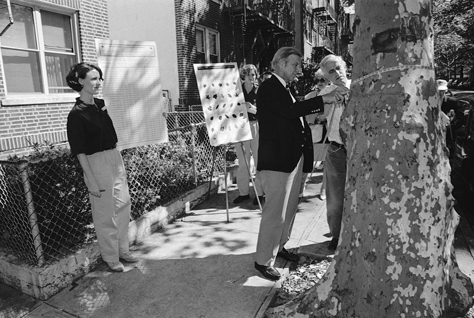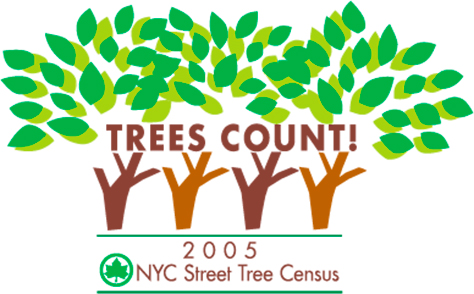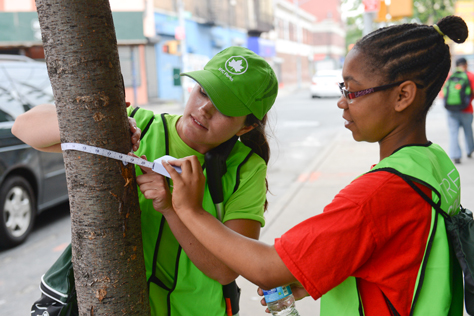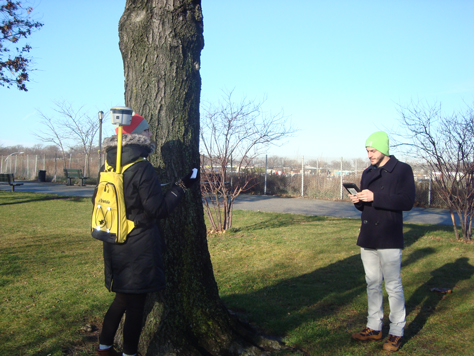Tree Census History
In 1995, 2005, and 2015 hundreds of volunteers joined us to inventory our street tree population. These inventory efforts resulted in an unprecedented understanding of NYC’s urban forest, and catalyzed major advances in New York City’s urban forest management.
1995-1996 Street Tree Census

The 1995 1996 Street Tree Census provided detailed information on the number, size, and species of street trees in New York City for the first time. The census also revealed that the city had more than 10,000 dead street trees. We used that information to create a block pruning tree maintenance program, and began a commitment to remove all dead street trees within 30 days of the initial request.
2005-2006 Street Tree Census

Ten years later, the 2005-2006 Street Tree Census found 592,130 trees growing along New York City’s streets a 19 percent increase over the 1995 1996 census. This new tree inventory allowed us to estimate the environmental services provided by New York City’s street trees, which include air quality improvement, energy savings, carbon sequestration, reducing stormwater runoff and other aesthetic benefits. These services are estimated to be worth almost $122 million annually. Armed with this knowledge of the benefits that our street trees provided, NYC launched the MillionTreesNYC initiative our pledge to plant and care for one million trees, and engage and grow the number of tree stewards and volunteers across the five boroughs.
2015-2016 Street Tree Census

In 2015, we launched our the 2015 Street Tree Census which brought more than 2,200 volunteers together for the largest volunteer initiative in Parks history. Using survey wheels, tape measures, tree identification keys, and a dedicated app, mappers helped us create the first full spatially accurate digital inventory of NYC’s street trees. The data was used to launch the New York City Tree Map, our detailed public map of every street tree in New York City. From TreesCount! 2015 2016, we learned that street trees confer $151.2 million in benefits to New York City and our forestry operations became exponentially more efficient and effective. This information helps us target greening initiatives, budget for and prioritize planting requests, and work with communities to enhance the tree canopy in their neighborhoods. From the inventory, we calculated that street trees occupy 73.7% of the planting locations along NYC streets, with space for approximately 240,000 additional trees across the five boroughs.
2017-2018 Park Tree Inventory

In 2017-2018, riding on the momentum of the 2015 Street Tree Census, Parks conducted the first-ever park tree inventory to count of trees growing in landscaped areas of parkland. These areas include playgrounds, lawns, picnic areas, park buildings, recreation fields, pathways, Greenthumb gardens, and all other manicured spaces. Landscaped trees are managed individually in the same manner at street trees. This survey allowed us to update and add park trees to the New York City Tree Map.